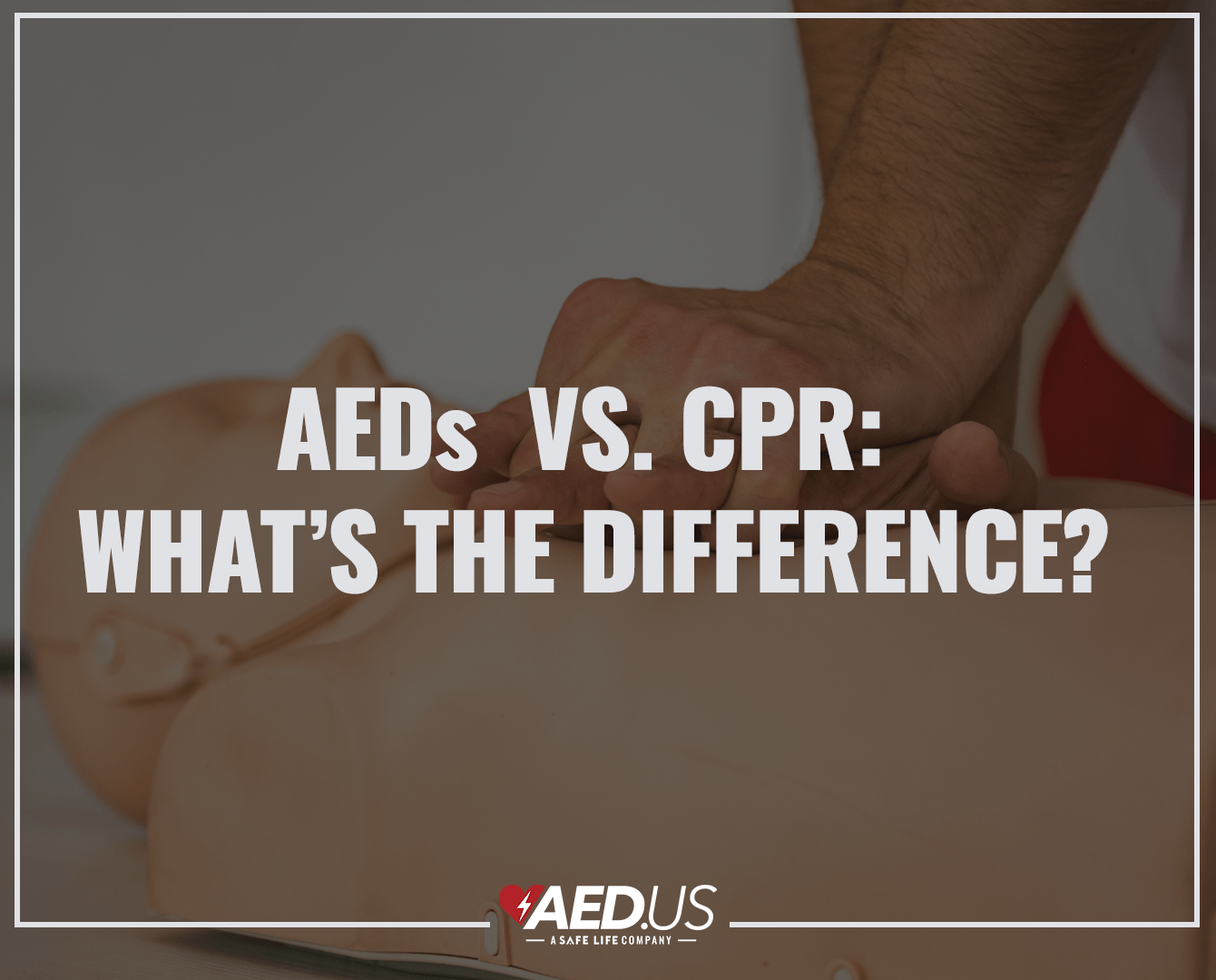Understanding How AEDs and CPR Work Together to Save Lives
In a cardiac emergency, every second counts. Two essential lifesaving techniques—AEDs (Automated External Defibrillators) and CPR (Cardiopulmonary Resuscitation)—are often mentioned together, but they serve different roles. While both are used in emergencies, understanding their differences can help bystanders take the right action and improve survival rates.

What Is an AED?
An AED is a portable device designed to analyze heart rhythms and deliver an electric shock if needed to restore a normal heartbeat. AEDs are straightforward to use, providing voice and visual instructions to guide rescuers through the process. Unlike CPR, which keeps the blood moving, an AED directly addresses the cause of sudden cardiac arrest (SCA) by attempting to restart the heart.

What Is CPR?
CPR is a manual emergency procedure designed to keep oxygenated blood circulating to the brain and other vital organs when the heart has stopped. It involves chest compressions and, in some cases, rescue breaths. The goal of CPR is not to restart the heart but to maintain circulation until professional help or an AED arrives.

Key Differences Between AEDs and CPR
- Purpose – CPR helps maintain circulation; an AED delivers an electric shock to restore normal heart rhythm.
- Effectiveness – Using an AED within the first few minutes of SCA can dramatically improve survival rates. CPR alone can sustain life but may not restart the heart.
- Application – CPR is a continuous process, while an AED provides targeted intervention when needed.
Why Both Are Important
AEDs and CPR are most effective when used together. Performing CPR can keep oxygen flowing to the brain until an AED is available, and using an AED significantly increases the chances of survival. Bystanders should feel empowered to take immediate action, as quick intervention saves lives.

Conclusion
Understanding the differences between AEDs and CPR ensures that the right action is taken in an emergency. Both are essential in increasing survival rates during cardiac arrest. To be prepared, consider learning CPR and ensuring access to an AED in your home, workplace, or community.
🔗 Visit AED.US to find the right AED for your home, workplace, or community.
📞 Need help? Call us at 888-652-1882 for expert guidance.

